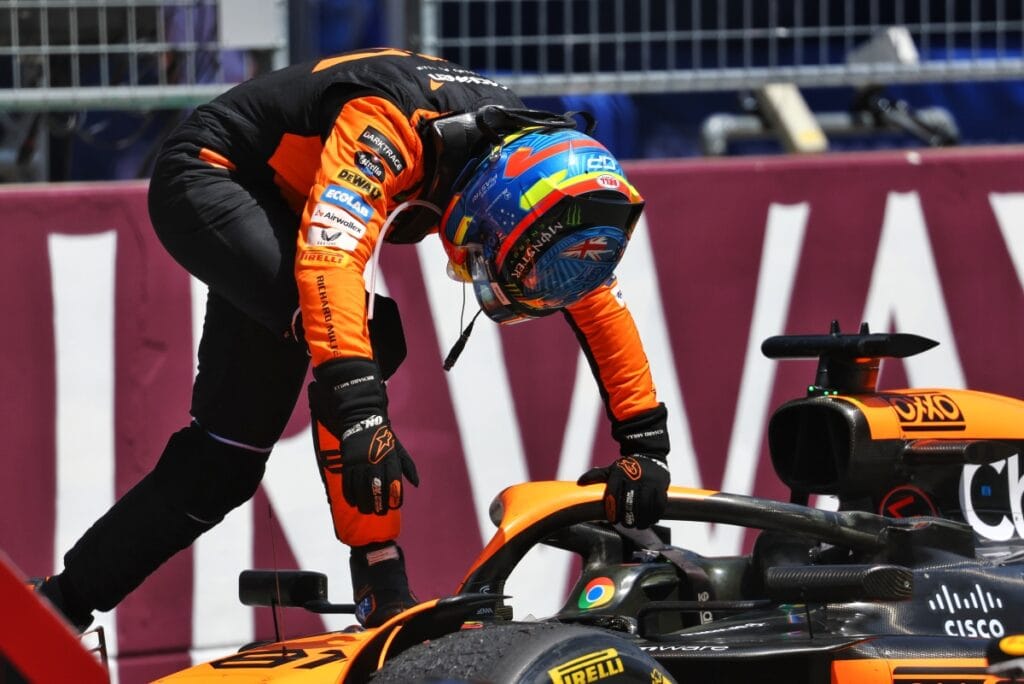McLaren's Controversial Move: Inside The Piastri Track Limits Protest That Shook F1

In the high-stakes world of Formula 1, every millisecond counts and the margins between glory and disappointment are razor-thin. This past weekend at the Austrian Grand Prix, the McLaren team found themselves embroiled in a heated confrontation with the FIA over a critical qualifying lap from rookie sensation Oscar Piastri.
Piastri, who has shown remarkable promise this season, appeared to have secured a stellar third-place on the grid. However, celebrations were short-lived when the stewards flagged his final lap for exceeding track limits at Turn 6, demoting him to seventh place. The incident immediately sparked a backlash, notably from Piastri himself who deemed the situation “embarrassing,” given the recent addition of more gravel traps around the circuit and the apparent inconsistency in their usage to define track limits.
The Basis of the Protest
McLaren wasted no time in challenging the FIA’s decision. Team Principal Andrea Stella emphasized that the protest wasn’t just about reclaiming a higher grid position but “in the interest of the sport.” McLaren demanded irrefutable evidence proving Piastri’s MCL38 had indeed crossed the white line. According to Stella, the evidence provided by the FIA fell short of this standard, lacking “beyond reasonable doubt” clarity.

Stella argued that the technology and methodology used to determine track limit violations must be consistent and applicable to all competitors. “If you use a helicopter view for a car, you need to use the helicopter view and it needs to be available for all cars,” he explained. This call for consistency is central to McLaren’s challenge, which Stella insists is driven by a quest for fairness and transparency within the sport rather than self-serving interests.
Stepping Into the Gray Area
In a sport where advanced technologies scrutinize every move, the notion of 'reasonable doubt' takes on monumental importance. Stella suggested the system's resolution and methodology used by the FIA lacked the necessary rigor to substantiate the penalty. He added, “I cannot say that the beyond reasonable doubt is satisfied. There’s a couple of principles... adequate resolution and consistent methodology across all evaluations are imperative.”
Broader Implications and Divergent Opinions
The debate over track limits is not a new one in Formula 1, and it often stirs passionate discussions amongst drivers and teams alike. Piastri's fellow Australian, Red Bull's Daniel Ricciardo, added his voice to the fray, arguing that the presence of gravel traps should negate the need for strict track limit policing. “I saw Oscar got his lap time deleted, that’s disappointing because the gravel’s there now… Turn 6, I don’t think we need to apply that when there’s a hard limit,” Ricciardo stated.
Ricciardo's comments underscore a broader philosophical debate in Formula 1 about the best way to manage track limits—whether natural deterrents like gravel should suffice, or if digital and human oversight should continue to prevail.
Ongoing Dialogue
The conversation between McLaren and the FIA is far from over. Stella maintains that continuing the dialogue is crucial for reaching a satisfactory resolution. “We are normally very supportive of the FIA. We always recognize that everyone is trying their best. But in this case, we couldn’t agree that the car is beyond the track limit beyond any reasonable doubt,” he noted. As such, the team's protest remains active, seeking to establish clearer and fairer standards for all.
The Bigger Picture
This incident at the Austrian Grand Prix highlights persistent complexities within Formula 1 governance, particularly regarding the interpretation and enforcement of track limits. For McLaren, it is more than a mere matter of gaining a competitive advantage; it’s about securing equitable treatment and maintaining the integrity of the sport. As this saga unfolds, the ramifications could lead to significant changes in how track limits are monitored and penalized in future seasons.
Conclusion
In summary, McLaren's protest following Oscar Piastri's disqualification from a promising qualifying lap during the Austrian Grand Prix underscores ongoing tensions and raises questions about the transparency and consistency of FIA rulings. As the dialogue continues, the outcome could set new precedents for how track limits are enforced, potentially reshaping competitive strategies and the regulatory landscape of Formula 1 racing.